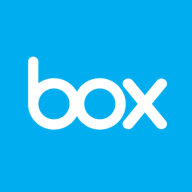

Box and OpenText Documentum compete in the content management category. Box appears to have the upper hand in pricing and support, whereas OpenText Documentum is favored for its extensive features.
Features: Box offers multi-platform accessibility, integration with Microsoft Office, and seamless file sharing on mobile devices. OpenText Documentum provides comprehensive lifecycle management, integration with systems like SAP, and handles extensive document volumes efficiently.
Room for Improvement: Box needs better search functionality, improved integration capabilities, and greater control over folder permissions. OpenText Documentum requires a modernized user interface, better performance with large document volumes, and simpler pricing models.
Ease of Deployment and Customer Service: Box predominantly utilizes public cloud deployment, making it easier to deploy, and receives high praise for its customer service. OpenText Documentum is primarily deployed on-premises or as a hybrid solution, with user feedback highlighting dependence on a support contract for effective assistance.
Pricing and ROI: Box offers flexible pricing and a free account tier, resulting in a competitive position. OpenText Documentum is noted for being expensive, yet users find value in its feature set, highlighting its cost-effective perpetual licenses for government use.
| Product | Market Share (%) |
|---|---|
| OpenText Documentum Content Management | 10.2% |
| Box | 4.3% |
| Other | 85.5% |


| Company Size | Count |
|---|---|
| Small Business | 16 |
| Midsize Enterprise | 9 |
| Large Enterprise | 27 |
| Company Size | Count |
|---|---|
| Small Business | 10 |
| Midsize Enterprise | 1 |
| Large Enterprise | 28 |
Box is a Modern Content Management Platform for companies of all sizes and industries. The difference that Box brings is that it offers the security and controls admins need with the sharing and collaboration capabilities end users want. Box has made it easier for people to securely share ideas, collaborate and get work done faster. Today, more than 62,000 businesses, including 59% of the Fortune 500, trust Box to manage content in the cloud.
The Box platform provides HIPAA, FINRA, FedRAMP, and many other compliances to go with granular access permissions and advanced security capabilities.
By using Box you can sync, share, and collaborate on all types of files, anywhere, on any device - but that's just the beginning. You can choose where to store your data, to manage your own encryption keys, and set workflows to automate content-based processes. You can also assign custom metadata tags to content, watermark sensitive content, and set file retention or legal hold policies.
Box has deep, native integrations with Microsoft Office and Outlook, Google Apps for Work, Salesforce, Netsuite, Docusign, Adobe, and many other best-of-breed solutions you may already be using.
OpenText Documentum Content Management provides centralized document management with strong security, advanced metadata management, and seamless integration with systems like SAP and Salesforce, aiding businesses in overseeing content effectively.
OpenText Documentum Content Management is known for its strong integration capabilities, especially with systems such as SAP, Salesforce, and Oracle E-Business Suite, facilitating effective document management. Its strengths include advanced security features, comprehensive metadata management, and robust support for lifecycle and workflow management. The platform's scalability and business process automation capabilities support industries with large volumes of content. It is adaptable for various sectors, including healthcare, banking, insurance, and government, providing document storage, sharing, and collaboration functionalities. While the intuitive automation engine enhances workflows, users have noted that improvements are needed in UI design, performance, and integration with additional systems. Concerns about cloud transition security, high costs, outdated workflows, and complex metadata management indicate areas for development. Supports are sought for AI integrations, improved cloud functionality, and efficient documentation.
What are the key features of OpenText Documentum Content Management?Industries such as healthcare, banking, and government use OpenText Documentum Content Management for document-centric processes, ensuring regulatory compliance and facilitating collaboration. With Captiva enhancing OCR and batch scanning, it is crucial for managing high-quality documentation and compliance efforts across sectors.
We monitor all Enterprise Content Management reviews to prevent fraudulent reviews and keep review quality high. We do not post reviews by company employees or direct competitors. We validate each review for authenticity via cross-reference with LinkedIn, and personal follow-up with the reviewer when necessary.